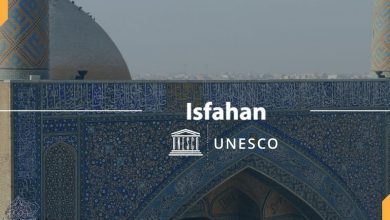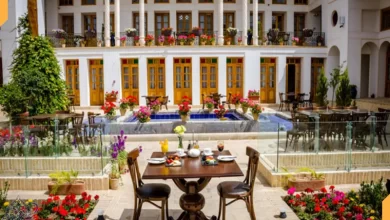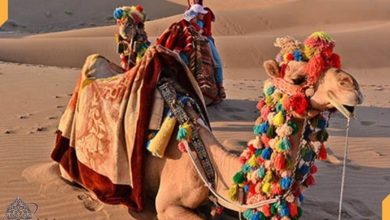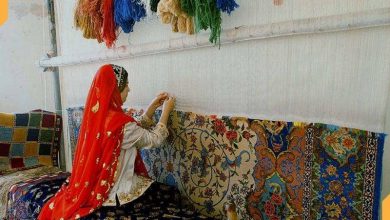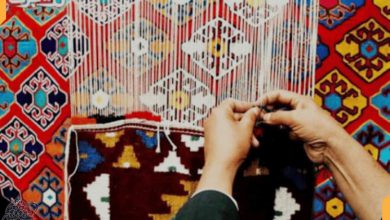Chaharshanbe Suri

Chaharshanbe Suri is one of the Iranian, traditional ceremonies that is being held on the evening of the last Tuesday of the solar year and before the oncoming of Nowruz and it includes different customs, from:
- incendiary and fireworks to eating trouble-shooter nuts
- family get- together
- trick or treat and etc
that some of these customs have been forgotten.
What is the Chaharshanbe Suri?
Chaharshanbe Suri is one of the most passionate preliminary customs of Nowruz in the farthest points of Iran fire is the most important element of it and its name is derived from the fire flames.
This ceremony is also celebrated in other countries like:
- Azerbaijan
- Afghanistan
- Turkey
- also by Iranian who are foreign residents.
For being more familiar with Chaharshanbe Suri, the short history, and its custom, be with us in this article
Some scholars know that the word “Sur” means “ceremony” and others think that it is retrieved from the Pahlavi word “Suric” which means “red” which is a sign of fire redness or the redness and health of the person.
Maybe an evidence of this claim is the pronunciation of “Charshambe Sorkhi” in Isfahan.
Which day is Chaharshanbe Suri?
Against its name, Chaharshanbe Suri is starting from the evening of the last Tuesday of March (Esfand) every year and it continues until late at night.
Chaharshanbe Suri of the year 1400, coincides with Tuesday, 24 of Esfand.
About the relation of Chaharshanbe Suri with Zoroastrianism, we can rely on the speeches of “Katayoun Mazdapour”, the Zoroastrian scholar and writer of Zoroastrian works that said:
“Iranian ceremonies and religions were belonged and also are belong to all Iranians. Lots of them are returning to the period before the immigration of Aryans to this land and many of them were not Zoroastrian, like Chaharshanbe Suri”
In any case, the oldest source that had been referred to the Chaharshanbe Suri is the book of “Bokhara history” by Abu Bakr Mohammad Ebn-e Jafar nareshkhi that is saying:
“When Amir Mansour Ebn-e Nouh sat on the throne of a ruler, in the month of Shawwal of the year 350, he commanded to the Jouy-e Moulian that make that house as a mansion and also replaced everything that was destroyed with better things.
Afterwards, the kinglet (Amir) had been settled in that mansion and when the year wasn’t finished, they had lighted a massive fire in the Suri night, as it’s a common habit.”
In addition, the Arabs knew Wednesday as a bad day and also didn’t choose that day for the wedding ceremony, trip and etc. As Manouchehri Damghni said in this couplet:
“Chaharshanbe ke ruze ballast, bade bokhor be satekin mey khor ta be afiyat gozarad”
Chaharshanbe Suri in Shah Name
We can also find the footprint of Chaharshanbe Suri in Shah’s Name; for example, in the story of the battle of Bahram-e Choobine with Permoudeh, the son of King Saveh, an astrologer advises Bahram:
- “Setarehshomar goft bahram ra ke dar chashanbe mazan kam ra
- Agar zin bepichi gazand ayadat hame kar nasoudmand ayadat
- Yeki bagh-e bad dar miyane sepah az in ruy va zan ruye bad-e razmgah
- Beshod charshanbe ham az bamdad bedan bagh-e kamrouz bashim shad
- Bebordand por maye gostardani mey va ravad va rameshgar va khordani
- Ze jeyhoun hami atash afroukhtand zamin o hava ar hami soukhtand
In addition, a group of scholars thinks that crossing Siavash from fire for showing his purity, is in fact, the starting point of Chaharshanbe Suri.
Siavash is captivated by the love and temptation of his stepmother, Soudabeh; until the news reaches his father, Keykavous; he asks Siavash to pass from seven tunnels and prove his pureness.
Therefore, Siavash came out of the fire with dignity on the last Tuesday of the year and Keykavous announced that from Wednesday to Friday is the national ceremony and the people all around the world rejoiced.
From that day on, Iranians are jumping over the fire on Tuesday night of every year, in remembrance of Siavash and his pureness, and to celebrate this day.
Chaharshanbe Suri in Chehel Sotoun Palace
The footprint of Chaharshanbe Suri Is also seen in historical monuments and one of them is Chehel Sotoun Palace whose southern salon is called Chaharshanbe Suri; where an interesting painting can be seen that shows a religion that is alike Chaharshanbe Suri.
This painting is one of the very old ones in this palace and it has drawn in the Safavid period under the supervision of Reza Abbasi.
Of course, the theme of this painting can’t be known as Chaharshanbe Suri quietly, but the existence of fire and the gathering of people around it, is obvious and for this reason, it is attributed to this old religion.
A group also believes that this is being related to the Indian tradition, with the subject of the dead and the religions after their death and Iranian only pictured that.
The philosophy of Chaharshanbe Suri
In fact, Chaharshanbe Suri was a prelude for the ceremonies of Nowruz and people were going to welcome the spring by withholding it.
The most important principle of this ancient religion was lighting a massive fire and jumping over it, to set the sickness and problems to the fire and receive redness, energy, and heat from the fire as a gift.
Censing harmel (Espand), broom burning, alum burning, scorching of old furniture, pouring the fire ash to the outside of the house and even pottery breaking were all actions in the way of removal of calamity and portent and elimination of wicked look (evil eye).
One of the philosophies of holding this ceremony and lighting fire was escaping from cold and heat demand; whilst Aryans believed that fire was a purifier and a tool for their purification and cleansing.
Also, the Iranian believed that the Foruhar (divine power) of the dead people come to the earth in the last five days of the year until 5 days after the new year, to go to their families and inform them of their status.
It is said that the ceremony of Chaharshanbe Suri is basically being formed for this reason. The people were lighting a fire on their rooftop on the first night of the last five nights of the year, up in addition to doing work, guide Foruhars to their house.
The story didn’t end there and people by house- cleaning and wearing new clothes, were preparing themselves for the New Year and getting away from enmities and turbidity, and also by doing this work, they were making Foruhars happy.
According to the tradition, on a Wednesday night with the darkness of the air, the people were torching this firewood, and all of the people that were gathered around the fire, from the woman and men to old and young people, were jumping over it, by reading the “Sorkhi-e to az man, Zardi-e man az to” to give :
- the paleness
- weakness
- sickness
- sorrow to the fire
and get them away from themselves and also take healthy, happiness and redness from the fire.
In addition, the sentences like “Gham boro, shadi biya, mehnat boro, ruzi biya” and “Ey Shab-e chaharshanbe, ey kelid-e chahar dande, bede morad-e bandeh” are also read between the people of Tehran, when jumping over the fire.
Fireworks are just a part of this ceremony; gathering and being together is conclusive of this ancient ceremony.
In the following, we talk about some of the most important religions of Chaharshanbe Suri.
Pottery breaking
Breaking the pottery is one of the interesting and unforgettable traditions of Chaharshanbe Suri that they break pottery after jumping over the fire.
Apparently, they believed that the misfortune and misery of the household is faded by pottery breaking. Breaking the pottery is along with some differences.
The trick or treat ceremony of Chaharshanbe Suri
In the ceremony of trick or treat:
- the young girls and boys are putting on a Chaddor (Cover) to not being known and then
- knock on the door of the house of seven neighbors and hit the bowls in their hands with a spoon
- the landlord goes toward to door of the house after hearing the sound of trick or treat and fills their bowls with:
- nuts
- candy
- sweets
- confections
- money
According to this tradition, those who take something from the landlords, are obtaining their wants.
Horoscope listening
Horoscope listening is one of the other traditions of Chaharshanbe Suri that people, especially the young girls, were standing in the passage on the evening of Wednesday night and listen to the talks of passers-by and by interpreting these speeches, realize the result of their intent
So that, if they hear happy and good talk, think that their needs will be met, and by hearing the bitter and gloomy talks, come to the conclusion that they don’t achieve their goal and wish in the New Year.
Shawl dropping
Shawl dropping was also a way for way taking omen.
Holding of this tradition is in this form that young people were making a long, colorful rope by knotting a number of silky napkins together, and then, they drop one head of this cloth rope to the inside of the neighbor’s house from the chimney opening and announced their presence with several loud coughs.
The house lord is pouring things that he already prepared as Chaharshanbe Suri’s gift in the corner of the shawl when he sees this colorful rope and knotting it and with a stir, telling the owner of the shawl to pull it up.
This gift had the force of an omen for the owner of the shawl; in the sense that bread is a sign of affluence, sweet as happiness and sweetening, pomegranate also referred to blessing and lots of children.
Fortune telling
The young people who wear Chaddor (cover) on the Chaharshanbe Suri night eat sweets.
In the past, the marriageable maidens in Chaharshanbe Suri had their own special ceremony.
In one of these ceremonies, they bought some Nabat (Rock candy) and seven walnuts from a grocer that was facing the Qibla and were getting to pottery to ride on the wheel of pottery and rotate it seven times.
Auguring with Boulogne (Boloni)
Auguring with Boulogne (Boloni) is taken into account as one of the sweetest, ancient customs of Chaharshanbe Suri that had more aspects of play and entertainment.
Boulogne (Boloni) was a small, mason jar that was used for the keeping of pickles, jam, spices and etc.
the young women and girls were gathering together and everyone was throwing something in this jar.
In addition, they wrote poems on paper and throw them in the jar.
Then, one of the first brought out a paper from Boloni and read the poem on it, and then, pulled out one of the items in the Boulogne (Boloni).
The poem that was read, was belonged to the owner of that item and it was her mood description and omen.
Chaharshanbe Suri ceremony in Isfahan
Lighting a fire and jumping over it, is common in Isfahan; albeit forgotten customs like pottery breaking, horoscope listening, knot opening and etc. were done among the inhabitants of this region of Iran.
On the Tuesday evening of the end of the year, they were burning a bush, and then, they were pouring a jug of water with a few seeds of harmel (Espand) on the fire to remove the calamity in the New Year.
Another interesting custom in the Chaharshanbe Suri was that if a person is in an imbroglio situation, he had tieing a corner of a napkin or cloth and wait until the first passer-by open the knot.
Preparation of trouble-shooter nut in the ancient Isfahan includes seven nuts or dried fruit like oleaster, pistachio, almond, raisin, fig, walnut, and date that sometimes they insert small pieces of Nabat (Rock candy) and coconut in the nut.
Frequently asked questions:
What is the meaning of Chaharshanbe Suri?
Some scholars know that the word “Sur” means “ceremony” and others think that it is retrieved from the Pahlavi word “Suric” which means “red” which is a sign of fire redness or the redness and health of the person
Which day the Chaharshanbe Suri is being held?
Chaharshanbe Suri is one of the Iranian ceremonies that is being held on the evening of the last Tuesday of the year with its special etiquette.
What is the reason for lighting the fire of Chaharshanbe Suri?
Lighting a massive fire and jumping over it causes people set their sickness and problems to the fire and get redness, energy, and heat from the fire as a gift.
What are the religions of Chaharshanbe Suri?
Fire lighting, trick or treat, pottery breaking, horoscope listening and etc.
conclusion:
Honor this ancient ceremony (Chaharshanbe Suri) and by doing the old religions of Iran land and keeping their memory alive, give a gift to the future generations.
Which special ceremony do you have in your city and country?
Tell us about the mood of this ceremony in your city. We are waiting for your comments, suggestions, and experiences…

